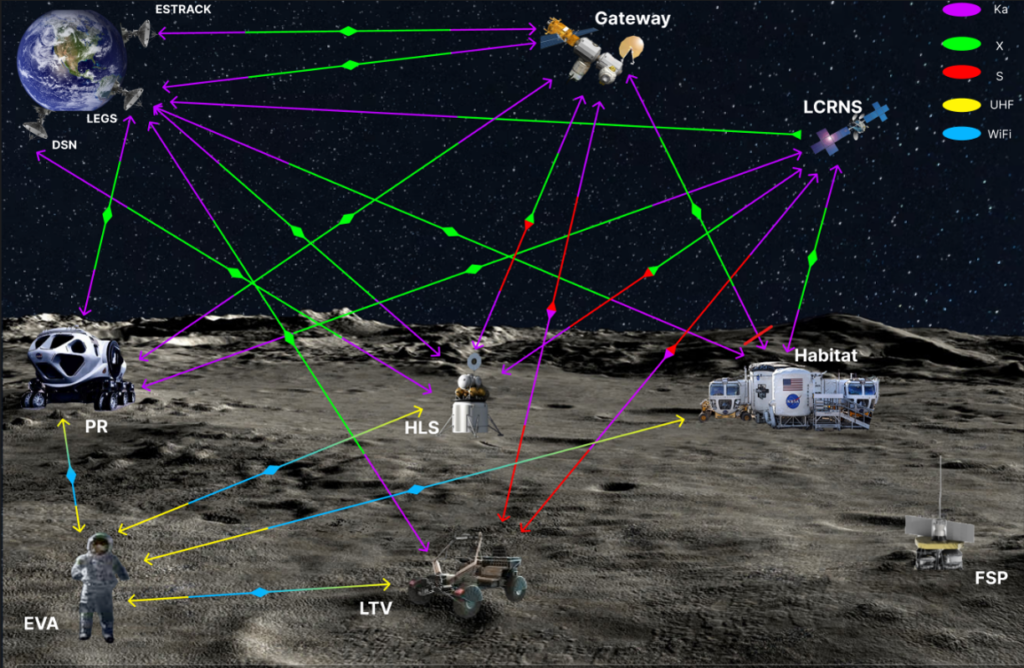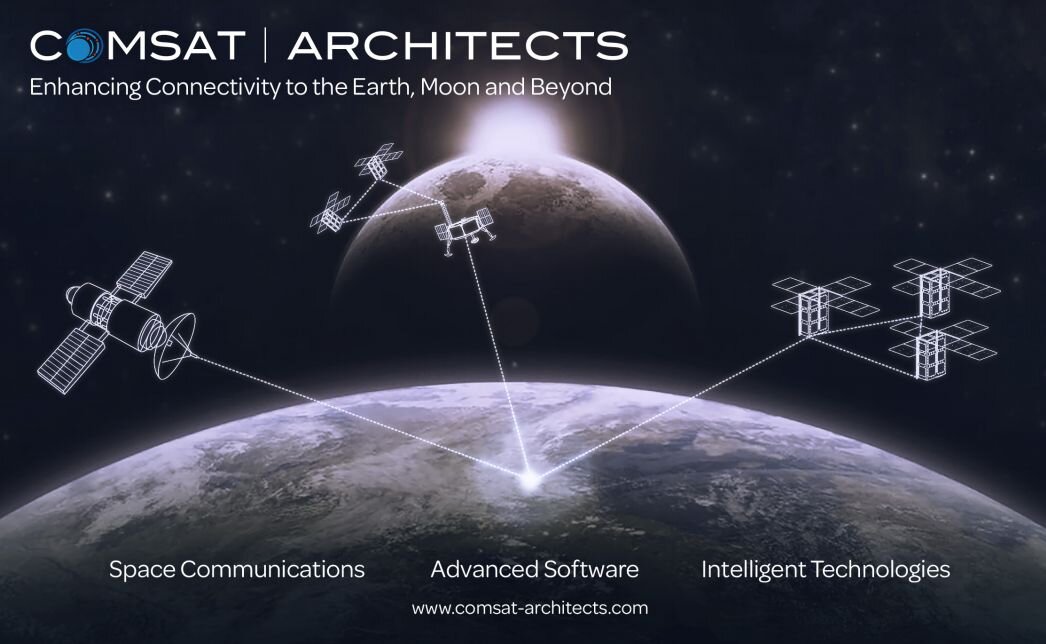As NASA, international space agencies, and the space industry turn their eyes back to the Moon, their focus has become not only returning to explore its surface but establishing a sustainable presence there for the benefit of humanity. With initiatives like NASA’s Artemis Program, coupled with growing commercial interest and innovative programs like the Defense Advanced Research Projects Agency’s (DARPA’s) LunA-10, the requirement for robust communication networks to facilitate this boom in lunar exploration has never been more pronounced.
At the forefront of lunar exploration stands the Artemis Program, NASA’s ambitious endeavor to return astronauts to the Moon and establish a sustainable presence by the end of the decade. Central to this mission is the Lunar Gateway, a space station orbiting the Moon, serving as a staging point for lunar surface missions. Communication between the Gateway and lunar surface requires sophisticated networks capable of handling vast amounts of data in real-time.

While NASA leads the charge, the lunar domain has also captured the attention of private companies. The promise of valuable resources such as water ice and rare minerals, coupled with the potential for scientific discoveries, has spurred a new space race. Companies like SpaceX, Blue Origin, and others – each with their own visions of lunar colonies and resource utilization – are investing heavily in lunar exploration. Robust communication networks are essential to support these endeavors, facilitating coordination between Earth, lunar orbit, and the surface of the Moon.
Another cornerstone of NASA’s lunar exploration strategy is the Commercial Lunar Payload Services (CLPS) program. Through CLPS, NASA contracts with commercial partners to deliver to the lunar surface payloads ranging from scientific instruments to lunar rovers. These missions rely on efficient communication systems to relay data back to Earth, enabling scientists to conduct experiments and gather invaluable insights into the lunar environment.
While government agencies like NASA drive exploration, organizations like DARPA are pushing the boundaries of space technology. DARPA’s LunA-10 program aims to rapidly develop foundational technology concepts that move away from individual scientific efforts within isolated, self-sufficient systems and toward a series of shareable, scalable infrastructure systems that interoperate. Creating interoperability between these systems minimizes any one organization’s lunar footprint and creates monetizable services for business interest in the lunar surface.
As we look towards the future, the importance of lunar surface communication networks will only grow. With plans to establish sustainable habitats (both at the lunar Gateway and on the surface), conduct extensive research, and potentially mine lunar resources, robust communication infrastructure will be essential, especially for human personnel. Furthermore, as human presence expands beyond the Moon to destinations like Mars, the lessons learned from lunar communication networks will serve as a foundation for interplanetary communication systems.
In this era of unprecedented space exploration, Comsat Architects stands at the forefront of developing cutting-edge solutions for lunar surface communication networks. Through collaboration with NASA and industry leaders, Comsat Architects is committed to pushing the boundaries of technology, ensuring seamless connectivity between Earth and the lunar surface. With a focus on innovation and reliability, Comsat Architects is shaping the future of space exploration, one communication network at a time.
To learn more about our exciting work on the lunar surface, visit our Services page or contact us at info@comsat-architects.com.




